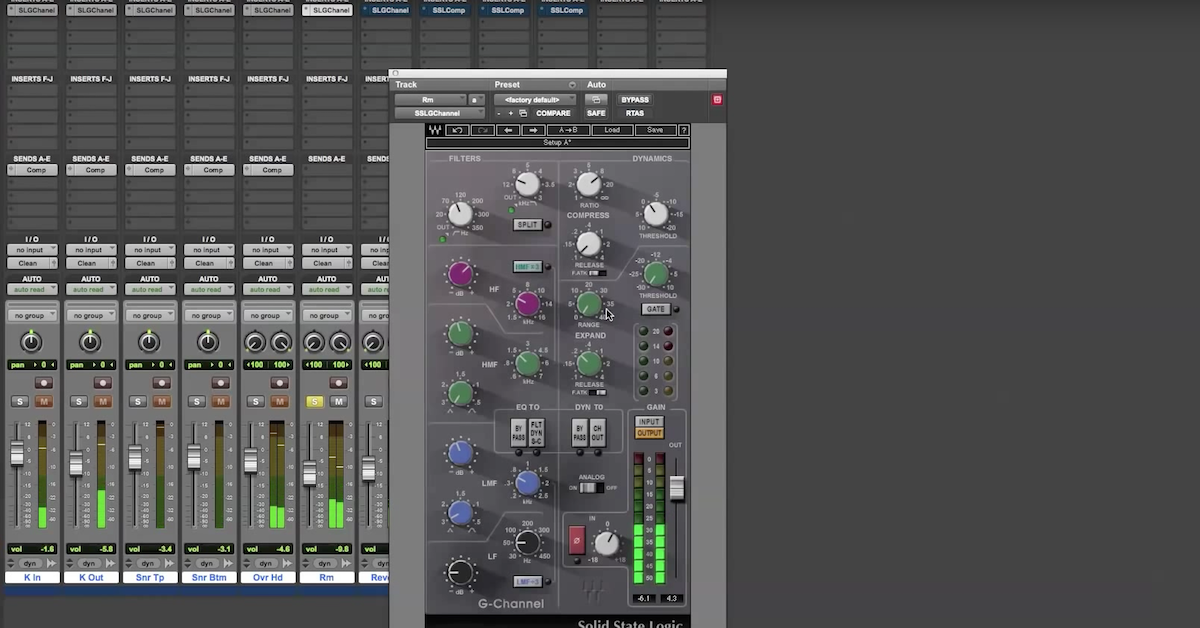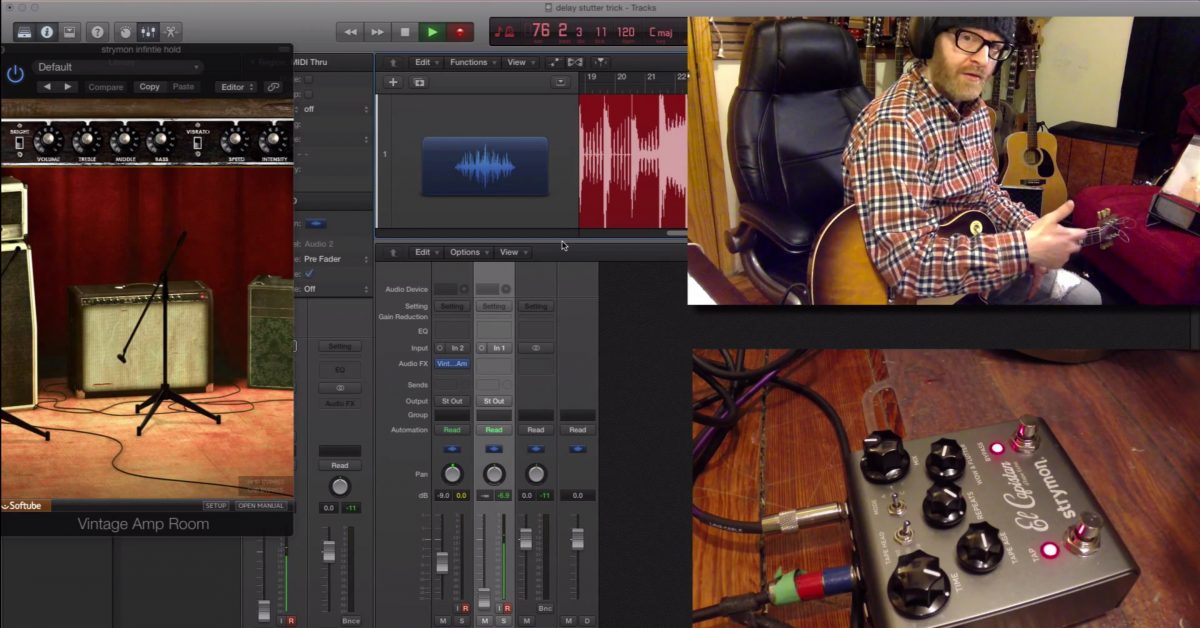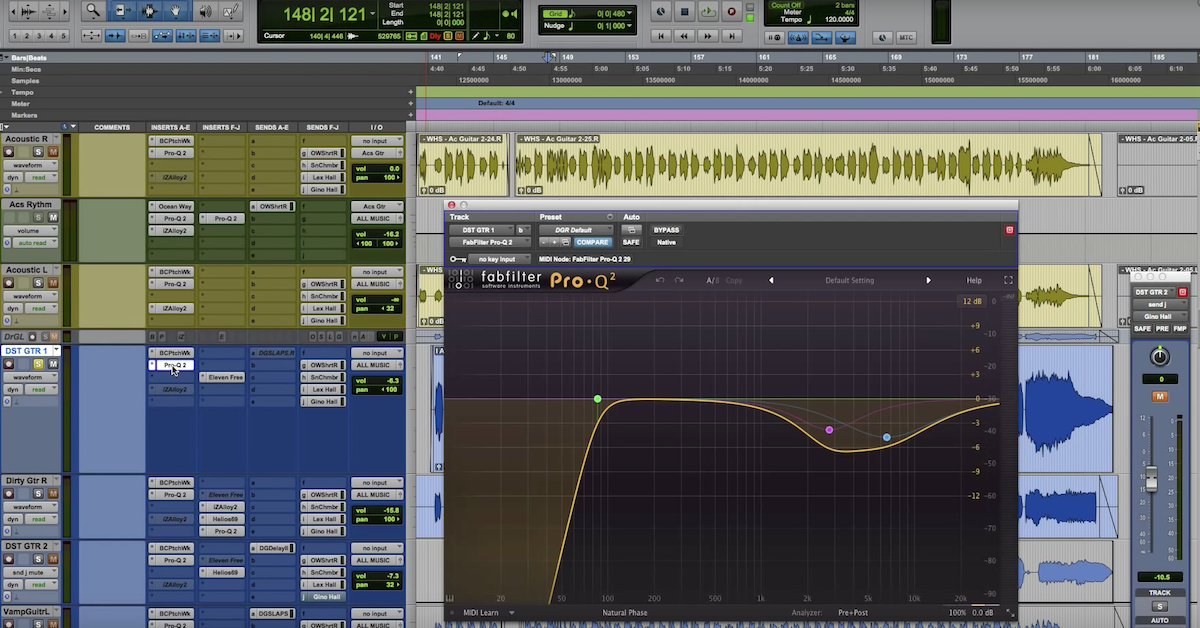Mix Tutorial: Waves H-Delay Plugin
I’m gonna be showing you the features, controls and sound of this plugin on an electric lead guitar track. The Waves Hybrid line of effects were designed to give you a classic analog sound but with a lot of the convenience, features, and controls that you normally only associate with digital effects. With the H-Delay plugin, Waves has modeled some of the classic delay sounds including Tape Delay and Lo-Fi Delay. But then gives you a lot of the controls like syncing the tempo of your delays to the host. That’s, you know, typical of digital delays.
When you first open the plugin, the controls seem a little bit overwhelming. However, Waves has included a fair amount of presets to get you started if you’re not sure how to use the controls. Let me play you back how I’ve got the plugin set up right now with my electric lead guitar sound. Then I’ll go through some of the controls to give you a better idea of how it works.
[electric guitars]
Depending on the purpose of your delay you might control the settings a little bit different. For this electric guitar sound, you know, I’ve done things like set up the tempo to my host with a dotted eighth note. And I don’t have a whole lot of feedback going on. But these are the basic controls that you’ll find on most delay effects. You can control the time of the delay, so for instance, you can switch between different tempo divisions when you’re syncing it to the host. So for instance, quarter notes, eight notes, dotted half notes — all those sorts of things are in there. I’m gonna switch back to dotted eighth notes for now.
Then you can control the feedback. This is how many delays are taking place. I’ll play it back and show you the effect.
[electric guitars + delay]
It’s probably best when you stop it you heard these delays can go on for a long time. Another cool thing that Waves has modeled is on old analog units when you would change the delay time while the audio was going through it, what would happen is the pitch of the signal would change. So what I’m gonna do is play you back, I’m gonna turn up the feedback a little bit and stop it. And then play around with the delay time.
[electric guitars + delay]
Certainly this has to be used as a very creative effect, and you know, you might not want to always be changing the pitch of the signal. But you know, in certain circumstances that’s a pretty cool feature to add in. You can also do things — so far I’ve just had it synced to the host, where you use BPM, but you can also do things like tap the tempo if you wanna enter in your own tempo rather than having it synced to your DAW.
Up here you have ping pong, and what that does is switch between — if you have it in stereo delay — switch between whether you have the delays bouncing back and forth between the left and right channels or if you have the delays going into stereo. Then you can do things like control left and the right samples independently.
This is just the simple controls that you would find in a lot of delay units, but down here you’ll see some of the more unique ones to the H-Delay. I’ll start out over here on the left with the lo-fi button, and I’ll play it back and you can hear how it sounds.
[electric guitars + lo-fi delay]
Basically what the lo-fi button does — on old analog delays when they were first being implemented on chip, because the capacity of the chip to store information over time was limited, one thing that the processing would do is decrease the sampling rate of the delays because it meant the information that was stored on chip was reduced. So with the lo-fi delay, it kind of reduces the sampling rate going on of the delays. Then you have modulation. This is kind of characteristic of what people think of the memory man delay sound, where you have modulation and you can control the rate as well and change this. Let me play it back and you can hear it.
[electric guitars + modulated delay]
Hopefully by overemphasizing it you get a better idea of how it sounds. With this kind of effect on electric guitar, it might be something you want to mix ins subtly. In other cases you might want to turn it on and boost it up a lot. But I’m gonna, again, just turn it off for now. Get on to the filters.
With analog delay a lot of times what will happen as the signal is fed back through the unit, a lot of times, you know, tape or other kinds of analog delay the high frequencies would kind of — you’d roll off over time. You have a low pass filter that kind of does that. Then you can also use a high pass filter to kind of focus where the frequency range of the delays are going. So already, I’ve gone ahead and rolled off some of the high end around 2k. What I’ll do is again crank up the feedback and stop the electric guitar sound so you can hear how it sounds separately.
[electric guitars + filtered delay]
So that’s the full frequency range. Rolling off the high end. Rolling off the low end. These things can be controlled together using the link button. Finally at the end over here you have things like dry/wet. I’m running the H-Delay as you can see as an auxiliary track so I have the delay already cranked up. But you can use it as an insert effect and then mix in the parts that you want — how much you want the balance between the dry and the wet. And you have an output control and then a subtle thing where you have these 4 different modeled analog flavors or characters or color that you can add in. You can also turn that off. And that’s really all the features of the H-Delay. It’s very versatile, can be used on many different thing, the controls are great and the sound is even better.





